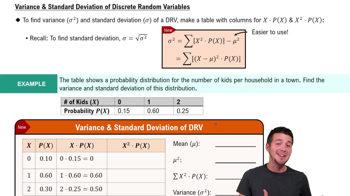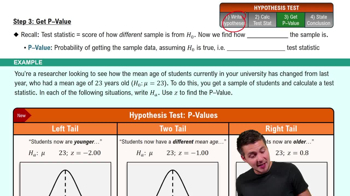Here are the essential concepts you must grasp in order to answer the question correctly.
Null Hypothesis (H0)
The null hypothesis (H0) is a statement that there is no effect or no difference, and it serves as a starting point for statistical testing. In the context of the ANOVA test for the cola weights, H0 posits that the mean weights of the four cola samples (regular Coke, Diet Coke, regular Pepsi, and Diet Pepsi) are equal. Rejecting H0 suggests that at least one sample mean is different from the others.
Recommended video:
Analysis of Variance (ANOVA)
ANOVA is a statistical method used to compare the means of three or more groups to determine if at least one group mean is significantly different from the others. It assesses the variance within each group and between groups, providing an F-value that indicates the ratio of these variances. A significant F-value, as shown in the Minitab output, suggests that the group means are not all equal.
Recommended video:
Variance & Standard Deviation of Discrete Random Variables
P-Value
The P-value is a statistical measure that helps determine the significance of the results obtained from a hypothesis test. It represents the probability of observing the data, or something more extreme, assuming the null hypothesis is true. In the provided Minitab output, a P-value of 0.000 indicates strong evidence against the null hypothesis, leading to the conclusion that there are significant differences in the mean weights of the cola samples.
Recommended video:







